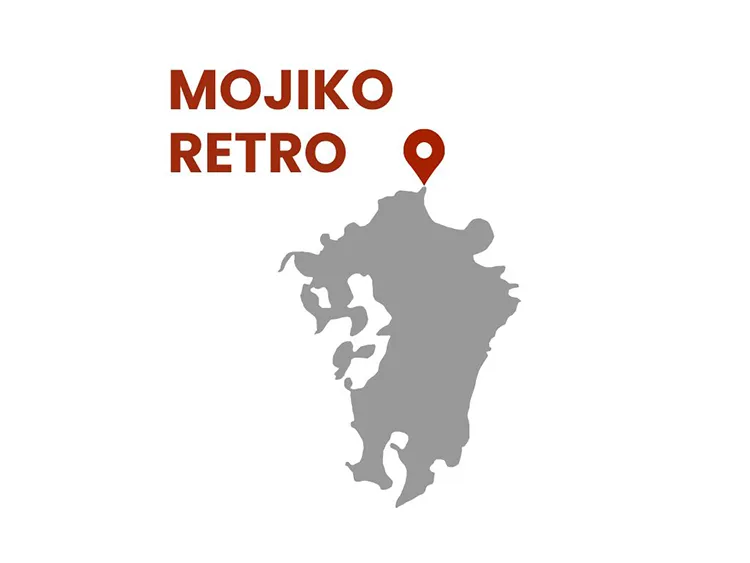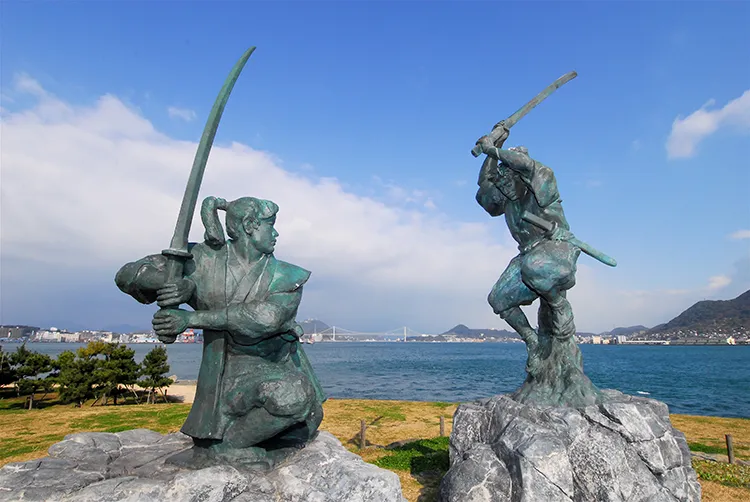
Mojiko Retro is the northernmost port town in Kyushu that retains its architecture and history from the Meiji Period to the early Showa Period. A tourist destination where you can enjoy the night view of the Kanmon Straits, culture, and nature.

Mojiko Retro is the northernmost port town in Kyushu that retains its architecture and history from the Meiji Period to the early Showa Period. A tourist destination where you can enjoy the night view of the Kanmon Straits, culture, and nature.
Like the Suez, Panama, Magellan, and Gibraltar, the Kanmon Strait is a vital waterway that has shaped the fate of a nation. For many centuries, this channel separating the islands of Honshu and Kyushu has been a key maritime seaway linking the Sea of Japan to the Seto Inland Sea. Countless generations of pilots and captains have braved its treacherous reefs and fierce currents of up to 11 knots (20.3 km/h). The strait is approximately 15 nautical miles in length and 12 meters deep, and at its narrowest point has only half a kilometer of navigable width. The challenges of navigating its waters are intensified by its S-shaped bend, poor visibility, and narrow channel.

Geographically, the strait is relatively small in scale, but in geopolitical, historical, and cultural terms, it is a giant. Over the centuries, the waterway has been visited by saints, spies, and scholars. It has been witness to naval warfare and political upheaval, as well as the tragic death of an emperor. Over the centuries, it has gone by several names, including “Anato,” “Bakan,” and “Shimonoseki.”
Modern geologists estimate the Kanmon Strait was formed when the islands of Honshu and Kyushu
separated roughly 6,000
years ago. However, Japanese myth states the Kanmon Strait was formed early in the third
century, as Empress Jingū was
traveling south to suppress uprisings by the Kumaso, a group of indigenous peoples who lived
in
what is now Kyushu.
During her journey, Empress Jingū stopped at a cave called Anato. The cave miraculously
split in
two, and the great rent
in the earth became the strait.
Toward the end of the twelfth century, Japan was plunged into conflict as the Taira and Minamoto clans became embroiled in the Genpei War (1180–1185). The conflict ended with the Battle of Dan no Ura, on the shore of the Kanmon Strait. The Taira warriors, realizing their inevitable defeat, threw themselves into the deadly currents rather than face the disgrace of capture. During the battle, the child emperor Antoku (1178–1185) plunged to a watery grave in the arms of his grandmother, Nii no Ama (1126–1185).
During the Muromachi period (1336–1573), envoy ships heading for Míng China (1368–1644) often
passed through the Kanmon
Strait to land at Moji. At the time, Moji served as a licensed trading port overseen by the
powerful Ōuchi warlords, who
controlled a vast portion of northern Kyushu. In 1550, Jesuit missionary Francis Xavier
(1506–1552) landed at
Shimonoseki while en route to Kyoto to proselytize at the imperial court. After being
swiftly rejected by the Buddhists
at the capital, he and his supporters returned to what is now Yamaguchi Prefecture to
continue spreading Christianity.
In 1592, the shogun and de facto ruler of Japan
Toyotomi Hideyoshi (1537–1598) sailed into the strait on his way to
Osaka. His ship entered the waterway at low tide, when the reefs were most dangerous, but
Hideyoshi was in a hurry. He
pressed onward, and his ship’s hull ran aground, tossing him into the waves. He barely
survived the ordeal.
In the early seventeenth century, renowned swordsman and philosopher Miyamoto Musashi (d.
1645) slew his opponent Sasaki
Kojirō (dates unknown) in a duel on Ganryūjima Island. The story of their encounter is still
retold today. During the
subsequent centuries of the Edo period (1603–1867), Shimonoseki was a major port of call for
westbound cargo vessels
transporting kelp, herring, and other valuable commodities from Hokkaido and Tohoku to Osaka
via the Kanmon Strait.

Anti-foreign and anti-shogunal sentiment began to grow in western Japan after July 8, 1853, when US envoy Commodore Matthew Perry arrived in Uraga Bay with his flotilla of “Black Ships.” Tensions came to a head on June 25, 1863, when the Chōshū domain’s Maeda battery turned its 106-pound cannon on the SS Pembroke, a US merchant ship, as it passed through the strait. The incident made global headlines and prompted a series of naval skirmishes between Western nations and the Chōshū domain. These battles came to be called the “Shimonoseki Campaign” (1863–1864). In May of the following year, the British Admiral Augustus Kuper (1809–1885) led a fleet of British, American, Dutch, and French ships into the strait, where they overwhelmed the 2,000-strong Chōshū forces with their 110-pound Armstrong guns. The Chōshū rebels’ rallying cry of “revere the emperor, expel the barbarians!” (sonnō jōi) rang hollow, and Japan remained open to the outside world.
The Anglo-Japanese Treaty of Commerce and Navigation came into effect in 1899. It ended the
unfair and restrictive trade
policies that had begun with the Harris Treaty of 1858. After years of lopsided trade, Moji
became a full-fledged
international port, and the strait became a vital site for Japan’s burgeoning international
trade in coal, rice, wheat,
flour, and sulfur.
Moji’s fortunes blossomed again after Russia’s 1902 completion of the Chinese Eastern
Railway, which linked Vladivostok
to the ice-free deep-water port at Lǚshùn, in Dalian (known also as Port Arthur). In 1898,
Moji’s port received more
than 1,000 foreign ships, the fifth most of any port in the country. Many of those ships
came to buy Chikuhō (Kyushu)
coal, which had become a prized commodity in East Asia.
During World War II (1939–1945), US General Curtis LeMay (1906–1990) instigated the aerial
mining of Japan’s inland
waterways as part of Operation Starvation (1945). United States military intelligence
identified the Kanmon Strait as
“the single most vulnerable point in the enemy’s shipping position,” and it became a primary
target for disruption. The
naval minefields greatly hindered the import of oil, iron, and food, a loss that only
worsened the country’s already
strict wartime rationing.
Today, around 600 vessels traverse the straits each day, including both local vessels and
ferries and container ships en
route to major ports throughout Asia, North America, and Australasia. The currents remain as
challenging as ever, and no
vessel of 10,000 tons or more may pass through without a trained maritime pilot aboard.